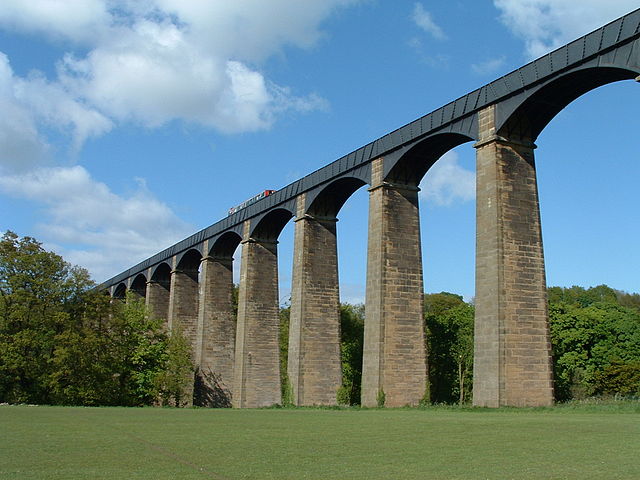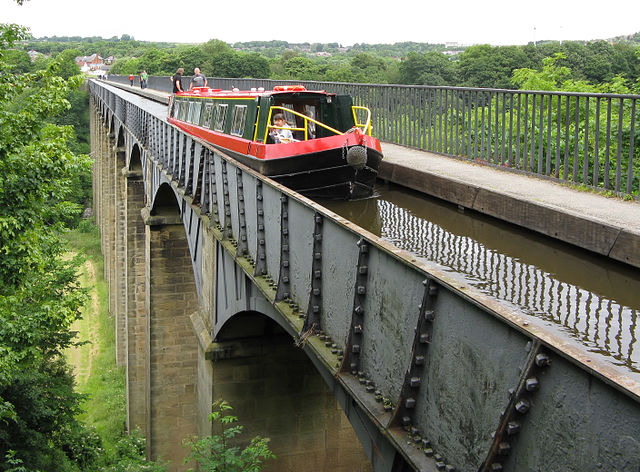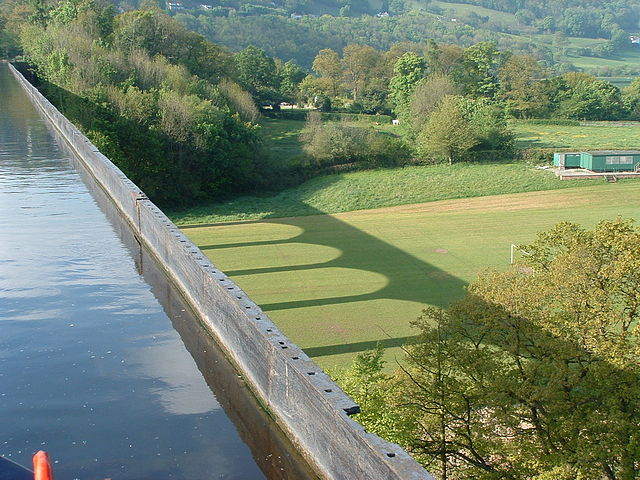Wales is home to one of the most impressive man-made structures in the country – the Pontycysyllte Aqueduct. It’s situated just to the south of Wrexham and is a brilliant place for a walking or canal trip. Let’s take a closer look at this architectural marvel and examine the process through which it came to be.

Photo by Akke via Wikimedia
History
The aqueduct was a loose collaboration between two geniuses. The first was William Jessop, an esteemed engineer responsible for a host of harbours and canals over his long career. But despite Jessop’s considerable experience, he was nearing retirement and so left much of the aqueduct’s design and detail to a younger, more enthusiastic mind: Thomas Telford.
Telford was a Scottish civil engineer who, throughout a career spanning several decades, designed and constructed a staggering number of bridges, aqueducts and embankments across the United Kingdom. After the Poncysyllte aqueduct was constructed, he went on to establish himself as one of the leading engineering and architectural minds of the Victorian era and has had several towns, colleges and monuments built in his name.
This particular example of his handiwork is one of the more impressive, enduring monuments to Telford’s brilliance. It was unlike anything that had come before and so required that Telford draw upon all of his experience in smaller, though similar projects, as well as developing entirely new techniques of his own.

Photo by Arpingstone
One of these techniques involved sealing the cast-iron plates that comprise the canal trough itself. Telford would caulk the joints with flannel that had been steeped in boiling sugar and then seal the result with lead. The end result was a single, long iron trench, as perfectly water-tight as if it had been forged as one continuous component.
The design
The aqueduct itself is a thing of beauty – as is the case with so many of the enduring structures of the era. It’s more than a thousand feet long, spanning the entire breadth of the river Dee. But for all its impressive length, it’s the height of the thing that really gets your head spinning.
The entire thing sits atop a procession of stone columns, each more than a hundred feet tall, and spanned by a series of 19 iron archways. Interestingly, the mortar used to bind the stones in the columns was created using a combination of lime, water and oxen blood – the latter being believed to impart strength to the structure (though probably not by Telford himself).
According to architecture critic and author Hugh Pearman, the aqueduct’s construction made very little commercial sense at the time and was likely commissioned as a result of the national obsession with building canals. It fell into disuse shortly after completion and by the end of World War II a century later was entirely abandoned. And yet, it was later the beneficiary of a remarkable comeback.

Photo by Akke
Pearlman postulates two reasons for the canal’s revived fortunes. The first was that it provided a supply of fresh water from Wales to the northwest of England. The second was the waterways preservation movement, which enjoyed success in the 1940s. The aqueduct would become symbolic of that success. A sense of powerful nostalgia gripped the nation after the war ended and so tourists from far and wide flocked to take a look at their industrial heritage.
The aqueduct remains an impressive sight to this day – particularly from the top. If you’ve a problem with heights, suffice to say, the view from up high may be a little more than you can handle. Take a trip across the top on a boat and the feeling is surreal – while on one side there’s a towpath and a handrail, on the other there’s just a short lip preventing all the water from falling off the side and into oblivion. The sensation for those travelling across is rather a lot like walking on air.
Where can I stay near the aqueduct?
If you’re looking to travel to the area from further afield, then you’ll be pleased to learn that there are a huge number of places to stay in the locale, including a number of high-quality Chester hotels, which is just across the border into England. Among the most conveniently-placed of these is Carden Park, which is just a short trip through Wrexham away. The hotel is rich in features, boasting two golf courses and a swimming pool and so represents an ideal base from which to launch trips to tourist hotspots on either side of the border. It’s also ideal for those forward-thinking people looking to host a Christmas party in Chester this year!

 By
By 







